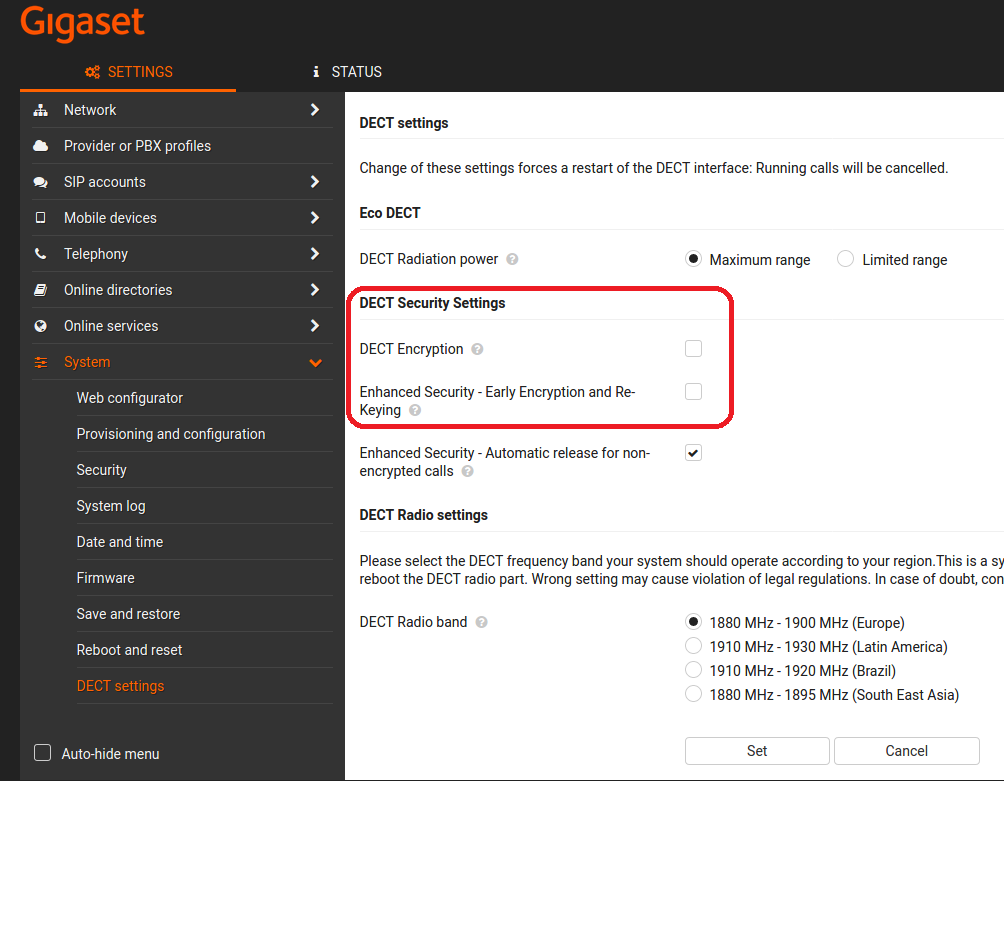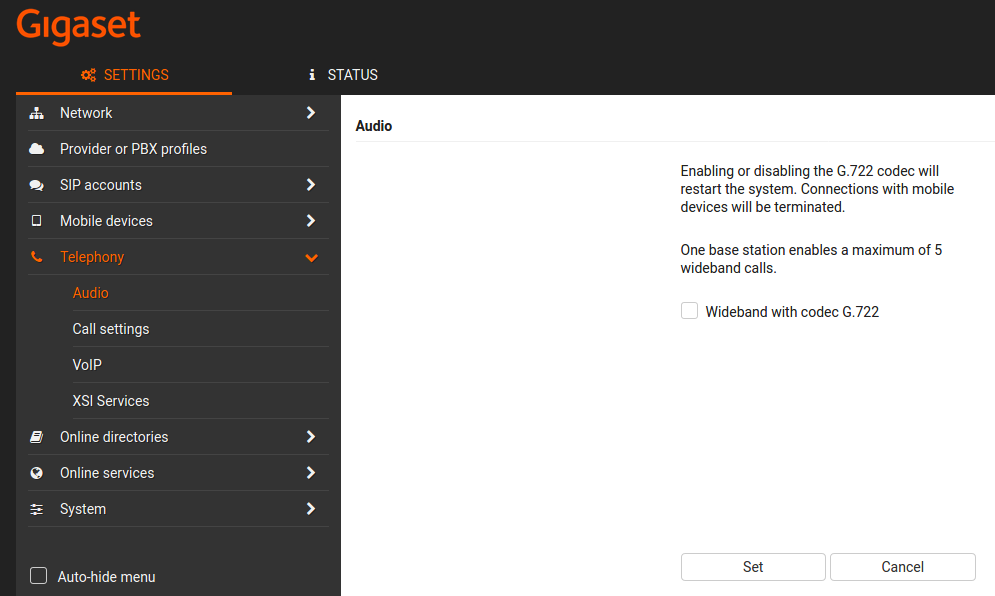DECT Settings → DECT Encryption, early Encryption and re-keying is disabled to support transparent repeater operation. 
Telephony → Audio → Wideband Support must stay deactivated to support transparent repeater operation: 
With handset you could check the RPN in the RFP-Scan procedure
If repeater support is deactivated RPN ends with '0' or '8'. If repeater support is activated RPN ends with '1' or '9'. Repeater might show up in RFP-scanning with RPN ending with '2..7' or 'a..f'. |